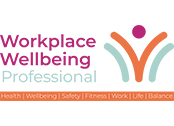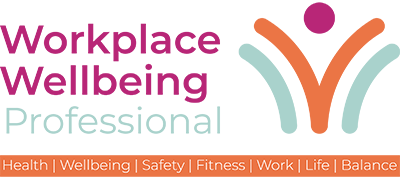A new survey from Substance Abuse Counselor reveals startling statistics about stress and substance use in today’s job market.
A staggering 88% of workers experience mental health or substance use issues at some point in their lives. Despite this high prevalence, only 27% have actively sought help. This disparity highlights a significant gap between the acknowledgment of these issues and the pursuit of professional help. An additional 9% of workers are contemplating seeking help but haven’t yet taken that next step.
Economic Strain and Job Stress
Workers see a clear correlation between economic strain and increased substance dependency. 86% believe the current economic climate drives people toward substance use. In addition, nearly half (46%) of workers have increased substance use due to job-related pressures or difficulty finding employment.
Further, workers facing financial pressures, job insecurity, and high levels of workplace stress are more susceptible to turning to substances as a coping mechanism. Half of millennials reported that substance use has worsened their financial situation, demonstrating how substance use can cause a downward spiral.
Generational Perspectives
Age is a factor when it comes to substance use, as well as getting mental health support. 69% of Gen Z and 68% of millennials use substances at least weekly — if not daily — to cope with their job stress. This makes them twice as likely as baby boomers to rely on substances for relief.
However, younger generations tend to be more open about the importance of addressing mental health and substance use proactively. 34% of Gen Z have sought or considered professional help, a big jump compared to only 16% of baby boomers. Young people are more likely to recognise the need for professional support but often face obstacles that prevent them from accessing necessary resources. That’s why we need improved mental health literacy and support systems tailored to the specific challenges faced by younger workers.
Gender Disparities
There are differences when it comes to gender, too. Men are more likely to turn to substances for stress relief, with 29% using them daily compared to 22% of women. Additionally, 73% of men spend more than $50 a month on substances, compared to only 50% of women. This suggests that workplace-related stress manifests differently across genders, potentially shaping coping strategies.
Industries Most Prone to Substance Use
Substance use isn’t consistent across industries, either. Some exhibit drastically high rates of substance use among workers, with 74% in construction and skilled trades, 65% in technology and IT, 61% in manufacturing, 60% in retail and hospitality, and 57% in healthcare.
These sectors may face unique pressures that contribute to the trend. In construction, the physical demands and long hours can lead to exhaustion and the temptation to use substances for relief. Technology and IT professionals may grapple with intense project deadlines and high expectations, fostering stress that drives substance use.
Retail and hospitality workers often contend with unpredictable customer interactions and long shifts, while healthcare professionals face emotional strain from caring for patients. Each of these factors creates an environment where resorting to substances becomes an appealing, albeit harmful, coping mechanism for managing stress and anxiety.
The Changing Job Market and its Impact on Workplace Stress
Additionally, the rise of AI and automation is dramatically reshaping the job market, leading to increased uncertainty for workers, particularly among younger generations. As businesses adopt new technologies, many traditional jobs are being displaced, contributing to job instability and heightened stress. 1 in 4 Gen Z workers and 1 in 3 millennials have experienced increased substance use as a coping mechanism amid this turmoil.
Younger workers, with the majority of their careers still ahead, face unique concerns. The fear of layoffs and economic downturns can create a feedback loop of stress and job insecurity, prompting reliance on substances for relief. This heightened anxiety not only affects their mental health but can also impede professional growth and opportunities.
Financial Pressure as a Leading Cause of Workplace Stress
Financial stress is the primary job-related anxiety affecting all generations of workers, with 45% of baby boomers, 48% of both Gen X and millennials, and 42% of Gen Z reporting it as their top concern. The pressures of covering living expenses and securing stable employment can be overwhelming, prompting individuals to turn to alcohol or drugs for relief.
86% of workers believe that the current economic climate is exacerbating this trend, indicating a widespread recognition of the link between financial strain and increased substance use. Addressing these financial worries is crucial for improving overall workplace well-being and mental health across all age groups.
Should Employers Be Responsible for Workplace-Induced Substance Use?
92% of workers believe that employers should take greater responsibility for employee mental health. This sentiment is especially pronounced among younger generations, with 58% of Gen Z and 45% of millennials advocating for legal accountability from employers concerning substance use stemming from workplace stress.
In comparison, only 29% of baby boomers share this perspective. This shift highlights a changing workplace culture, where the expectation for mental health support is increasingly seen as vital for all.
Actionable Advice for Employers
With the workplace having such a profound impact on employees, employers must adopt proactive strategies that foster resilience and support in the members of their organization. By understanding the underlying factors that contribute to these challenges, employers can implement targeted interventions that not only address immediate concerns but also promote a culture of well-being.
Fostering Supportive Environments
To combat the challenges of substance use and mental health in the workplace, open conversations are essential. Employers should encourage dialogue around mental health and substance use, creating an environment where employees feel safe discussing their struggles. Training programs that address mental health awareness and substance use prevention can help cultivate a more supportive workplace culture.
Implementing Employee Assistance Programs
Employee assistance programs (EAPs) can provide vital support to employees facing substance use and mental health challenges. These programs typically offer confidential counseling, resources, and referrals to specialised services. They can help bridge the gap in support and encourage employees to seek help.
Prioritise Mental Health Training
Employers should invest in mental health training for both management and staff. Training can help identify signs of substance use and mental health issues, equipping employees with the skills to provide support to their peers. Programs that focus on destigmatizing mental health and creating an inclusive workplace culture may be particularly beneficial.
Create Flexible Work Options
Flexible work options, such as remote work and flexible hours, can alleviate job stress and improve work-life balance. By offering these options, employers demonstrate a commitment to employee well-being and reduce the risk of substance use stemming from work-related stressors.
Develop Clear Policies and Support Systems
Employers should establish clear policies regarding substance use and mental health support. These policies should outline the resources available to employees, including counseling services, EAPs, and leave policies related to mental health. Transparency in these policies fosters trust and encourages employees to utilise available resources.
Actionable Advice for Employees
In addition to employer-led initiatives, employees need to take an active role in their own well-being. Here’s how employees can enhance their resilience and improve their coping strategies.
Seek Support and Use Resources
Employees should actively seek support if they’re facing challenges related to substance use or mental health. Resources such as EAPs, counseling services, or support groups can provide the necessary guidance and help individuals navigate their struggles.
Engage in Open Conversations
Employees should feel empowered to engage in open conversations about mental health and substance use, both with their peers and supervisors. Sharing experiences can help destigmatise these issues and encourage others to seek help. Building a supportive network among colleagues can foster a sense of community and resilience within the workplace.
Prioritise Self-Care
Practicing self-care is essential for maintaining mental health and preventing substance use. Employees should prioritise activities that promote well-being, such as exercise, hobbies, and social connections. By taking proactive steps to nurture their mental health, individuals can better manage stress and reduce the likelihood of turning to substances as a coping mechanism.
Ultimately, the hidden costs of substance use in today’s labor market are profound, impacting both individual well-being and organizational productivity. By addressing the barriers to seeking help, fostering open conversations, and implementing supportive policies, employers can create healthier work environments that prioritise mental health. Employees, in turn, must recognise the importance of seeking support and engaging in self-care.
Together, through collective action and awareness, we can work towards a more resilient workforce that prioritises mental health and well-being.

Devin Boudreaux is a communications & digital media expert with a lengthy background in storytelling, research, and audience engagement. He’s obsessed with emerging trends, media landscapes, and public discourse.
He’s worked across various industries and aims to distill complex topics in a compelling & accessible way. Whether that’s analyzing cultural shifts, economic developments, or digital trends, he’s uncovering insightful narratives to keep readers informed & engaged.
When he’s not researching news in the trenches, you’ll catch him logging movies on Letterboxd or burying his face in a bowl of Generals Tofu!


